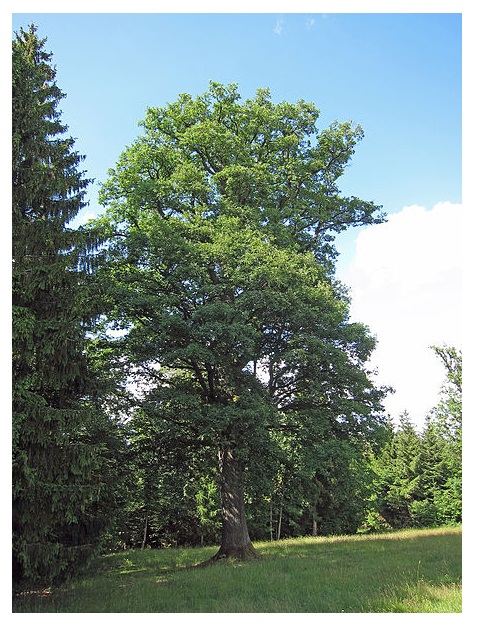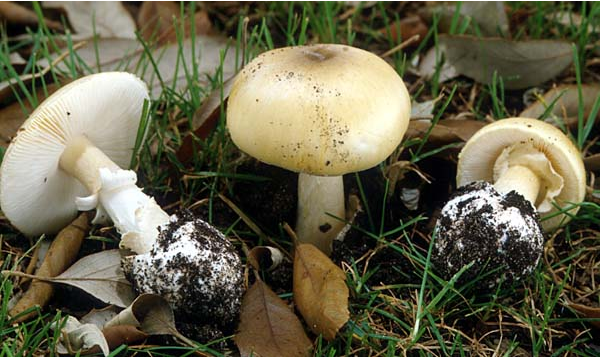Interactions
At first glance and inspection of the Amanita phalloides, it would appear that there is not a single type of interaction between this fungus and any other type of living material. Surely, no organism could withstand the potency of the poison that claims even humans. Yet, with much closer scrutiny and insight, a grand revelation is revealed. For in fact, the Amanita phalloides does have a mutualistic relationship with a variety of species of trees. But the most prevalent interaction lies with the oak tree. The oak tree, clearly displayed on the right, shares a mutualistic relation with the Death cap. To see another example of a mutualist look at the British Soldier Lichen. The Death cap is an endomycorrhizal fungus meaning the hyphae of the fungus are embedded with in the roots of the tree. By penetrating the cell wall and cell membrane of the plant cell with the fungal hyphae, the relationship can begin and flourish. This relationship allows for multiple benefits to both organisms without any detriment to either organism. In this relationship the oak tree receives mainly nitrogen to help facilitate processes and reactions within the tree during its lifespan. The fungus then receives sugars and nutrients through photosynthesis of the tree. Since the fungus cannot perform photosynthesis to make their own food, a mutualistic relationship with a tree of any kind greatly benefits the fungus and its' survival.
Although not classified as a direct relationship, the Amanita phalloides shares interactions with all other organisms because of the poisonous qualities that it contains. Just a touch, or ingestion of this fungus begins to break down the kidney and liver of any helpless creature that may stumble upon it.

<--Reproduction Cool Tidbits-->
Home